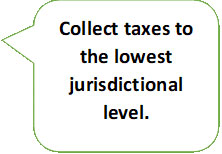South Dakota versus Wayfair explained.
 Nancy Manzano, Director in the Chief Tax Office of Vertex, Inc., recently discussed best practices for retailers doing business in states without a physical presence. And, the need to adapt tax collection, remittance, increased revenue and transaction documentation, additional state monthly tax returns and new processes.
Nancy Manzano, Director in the Chief Tax Office of Vertex, Inc., recently discussed best practices for retailers doing business in states without a physical presence. And, the need to adapt tax collection, remittance, increased revenue and transaction documentation, additional state monthly tax returns and new processes.
During the Internet Retailer’s webinar on October 25, Manzano said the US Supreme Court ruling of June 21, 2018, redefines a virtual storefront as the same as a physical one. This ruling overturned the 1992 Quill Corporation v. North Dakota decision, which prevented states from requiring sales tax collection from businesses without a physical presence in the state. South Dakota versus Wayfair now allows states to continue to set economic thresholds for taxation of sales revenues from out-of-state retailers. Over 20 states currently require tax collection at various levels with various effective dates. South Dakota’s threshold, for instance, allows up to $100,000 in sales or 200 transactions. Many states started enforcing their requirements this Fall and some others will begin January 1, 2019.
What you should do
 Recommendation: The Wayfair decision also impacts U.S. territories, such as the U.S. Virgin Islands and the District of Columbia, so the recommendation is to collect taxes to the lowest jurisdictional level.
Recommendation: The Wayfair decision also impacts U.S. territories, such as the U.S. Virgin Islands and the District of Columbia, so the recommendation is to collect taxes to the lowest jurisdictional level.
Action: Keep up with the latest changes across states at https://www.vertexinc.com/south-dakota-v-wayfair-inc-knowledge-center.
Previously, a physical presence was required to establish tax reporting, but the rapid growth of ecommerce and the lack of federal legislation prompted the South Dakota suit.
Watch: In the meantime, many states have tax rules in effect that are related to cookies, click-through rates and affiliates. Expect those requirements to persist—as well as possible incentives and amnesty programs. Some states can’t enforce new rules due to pending litigation. Others will be proposing new bills.
How to stay in compliance with South Dakota versus Wayfair
Going forward, retailers must address calculation of aggregated sales, numbers of transactions, sales tax holidays and thresholds by state and other jurisdictions. Here are a few suggestions to help you with your compliance.
- Consider possible product or customer exemptions.
- Make sure to register in states with requirements.
- File even if there are no sales until unregistration is complete.
- Implement automation to accommodate registration and notifications.
For help with your e-commerce site implementation and marketing, Beasley Direct and Online Marketing, Inc., can help! Get a free consultation.
Find more case studies and white papers at https://beasleydirect.com/resources/white-papers.
By Jan Carroza, VP of Business Development and Account Management, Beasley Direct and Online Marketing, Inc.



